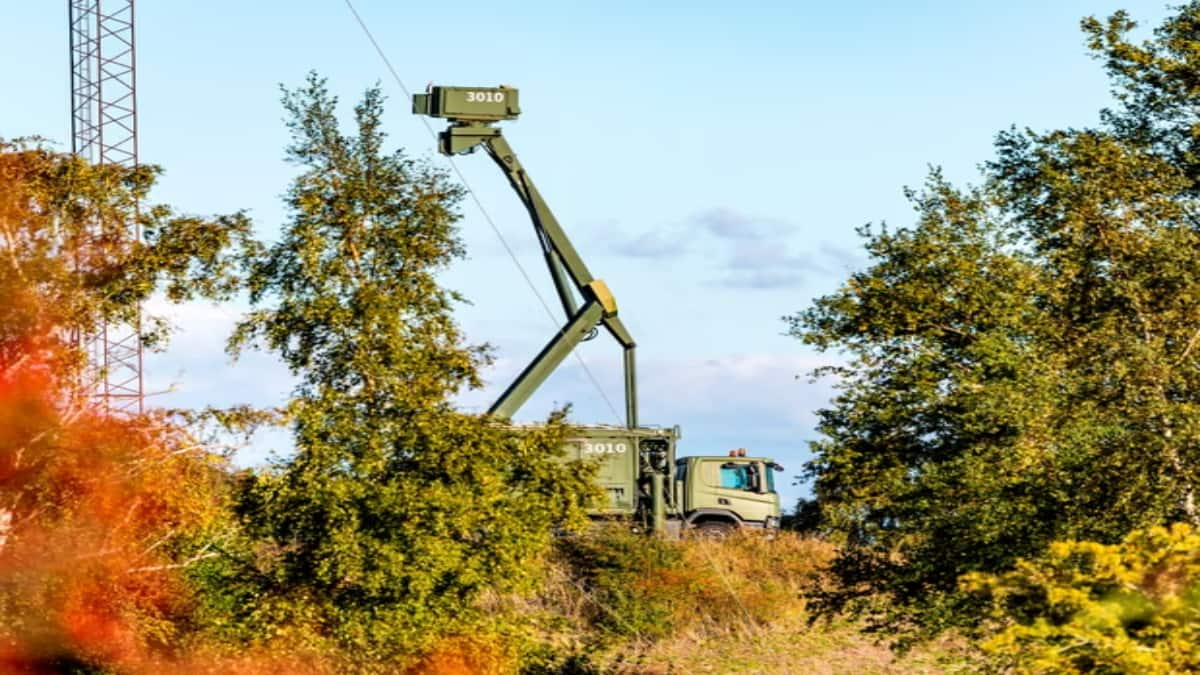What is the story about?
Amidst the brewing tensions in Europe, Danish authorities reported that they had detected multiple drones at several military sites overnight. In light of this, the authorities have also announced a ban on all civilian use of the unmanned aircraft for this week. What is concerning is that the incidents are occurring at a time when Copenhagen is preparing to host two European summits.
On Sunday, the Danish defence ministry said that it had observed drones at several of its armed forces locations on Saturday night. However, they did not share further details on the matter. Meanwhile, the country's transport ministry announced that all civilian use of drones would be banned to ensure security while Denmark hosts an EU summit and a meeting of the European Political Community, which is a wider gathering of leaders from across the continent.
The ministry maintained that the move would “remove the risk that enemy drones can be confused with legal drones and vice versa”, and it said any violation of the ban could result in a fine or two years’ imprisonment.
There has been a spate of drone incursions in Denmark, Poland and Romania in recent weeks, as well as the infiltration of a Russian jet into Estonian airspace. The infiltrations are rocking Europe at a time when Russia continues to bombard Ukraine.
On Sunday, a German air defence frigate, FSG Hamburg, arrived in Copenhagen to contribute to “strengthening Denmark’s airspace surveillance” during the summits, Danish armed forces said. It is pertient to note that the frigate is part of Nato’s “Baltic Sentry” mission, which the alliance said this weekend it intended to strengthen.
In light of this, a Nato spokesperson said there would be “even more enhanced vigilance” in the Baltic Sea region, including Denmark. Baltic Sentry – deployments of Nato frigates, aircraft and drones to protect infrastructure – was launched in January after a series of incidents in which power cables, telecoms links and gas pipelines on the Baltic Sea floor were damaged.
Amid the recent incursions, NATO has also launched “Eastern Sentry” earlier this month to bolster the defence of Europe’s eastern flank in response to Russian drone incursions of Polish airspace. Amid the chaos, Ukrainian President
Volodymyr Zelenskyy said he had spoken to Norway’s prime minister, Jonas Gahr Støre, about the “increasing incidents with Russian drones over Europe”, adding: “The unity of Europeans will definitely provide an answer to this threat.”
In the recent provocative move, Russia launched hundreds of drones and missiles at Kyiv and other Ukrainian cities overnight in a 12-hour bombardment, killing at least four people. Meanwhile, Russia has denied deliberate targeting of Nato countries with drones.
The Kremlin accused Denmark’s prime minister,
Mette Frederiksen, of “unfounded allegations” last week after she said authorities were still investigating who was behind a drone incursion that shut Copenhagen airport for several hours, but could not rule out Russia.
“Every threat to Nato’s air, land and sea space will be dealt with a resolute and proportionate response," the chair of Nato’s military committee, Adm Giuseppe Cavo Dragone, said in a statement on Saturday.
Asked whether Nato’s air policing mission in the Baltic could be upgraded to air defence, Cavo Dragone stressed that the origin of the drones was still being investigated, but “this could be an option, depending on what the final assessment”.
With inputs from agencies.
On Sunday, the Danish defence ministry said that it had observed drones at several of its armed forces locations on Saturday night. However, they did not share further details on the matter. Meanwhile, the country's transport ministry announced that all civilian use of drones would be banned to ensure security while Denmark hosts an EU summit and a meeting of the European Political Community, which is a wider gathering of leaders from across the continent.
The ministry maintained that the move would “remove the risk that enemy drones can be confused with legal drones and vice versa”, and it said any violation of the ban could result in a fine or two years’ imprisonment.
There has been a spate of drone incursions in Denmark, Poland and Romania in recent weeks, as well as the infiltration of a Russian jet into Estonian airspace. The infiltrations are rocking Europe at a time when Russia continues to bombard Ukraine.
The escalating tension
On Sunday, a German air defence frigate, FSG Hamburg, arrived in Copenhagen to contribute to “strengthening Denmark’s airspace surveillance” during the summits, Danish armed forces said. It is pertient to note that the frigate is part of Nato’s “Baltic Sentry” mission, which the alliance said this weekend it intended to strengthen.
In light of this, a Nato spokesperson said there would be “even more enhanced vigilance” in the Baltic Sea region, including Denmark. Baltic Sentry – deployments of Nato frigates, aircraft and drones to protect infrastructure – was launched in January after a series of incidents in which power cables, telecoms links and gas pipelines on the Baltic Sea floor were damaged.
Amid the recent incursions, NATO has also launched “Eastern Sentry” earlier this month to bolster the defence of Europe’s eastern flank in response to Russian drone incursions of Polish airspace. Amid the chaos, Ukrainian President
In the recent provocative move, Russia launched hundreds of drones and missiles at Kyiv and other Ukrainian cities overnight in a 12-hour bombardment, killing at least four people. Meanwhile, Russia has denied deliberate targeting of Nato countries with drones.
The Kremlin accused Denmark’s prime minister,
“Every threat to Nato’s air, land and sea space will be dealt with a resolute and proportionate response," the chair of Nato’s military committee, Adm Giuseppe Cavo Dragone, said in a statement on Saturday.
Asked whether Nato’s air policing mission in the Baltic could be upgraded to air defence, Cavo Dragone stressed that the origin of the drones was still being investigated, but “this could be an option, depending on what the final assessment”.
With inputs from agencies.
Do you find this article useful?

















